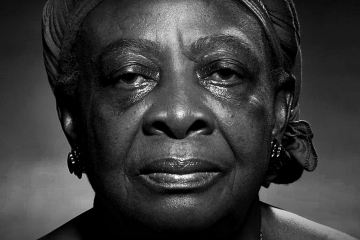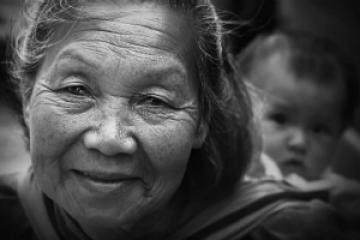Additional Information
WHO global report on falls prevention in older age pdf, 1.05Mb
Factsheet
Key Facts
- Falls are the second leading cause of accidental or unintentional injury deaths worldwide.
- Each year an estimated 424 000 individuals die from falls globally of which over 80% are in low- and middle-income countries.
- Adults older than 65 suffer the greatest number of fatal falls.
- 37.3 million falls that are severe enough to require medical attention, occur each year.
- Prevention strategies should emphasize education, training, creating safer environments, prioritizing fall-related research and establishing effective policies to reduce risk.
A fall is defined as an event which results in a person coming to rest inadvertently on the ground or floor or other lower level. Fall-related injuries may be fatal or non-fatal1 though most are non-fatal. For example, of children in the People's Republic of China, for every death due to a fall, there are 4 cases of permanent disability, 13 cases requiring hospitalization for more than 10 days, 24 cases requiring hospitalization for 1–9 days and 690 cases seeking medical care or missing work/school.
The world population is rapidly ageing
Between 2000 and 2050, the proportion of the world's population over 60 years will double from about 11% to 22%. The absolute number of people aged 60 years and over is expected to increase from 605 million to 2 billion over the same period.
It took more than 100 years for the share of France's population aged 65 or older to double from 7 to 14%. In contrast, it will take countries like Brazil and China less than 25 years to reach the same growth.
The number of people aged 80 years or older will have almost quadrupled between 2000 and 2050 to 395 million. There is no historical precedent for a majority of middle-aged and older adults having living parents, as is already the case today. More children will know their grandparents and even their great-grandparents, especially their great-grandmothers. On average, women live six to eight years longer than men.
The functional capacity of an individual's biological system increases during the first years of life, reaches its peak in early adulthood and naturally declines thereafter. The rate of decline is determined, at least in part, by our lifestyle and environment throughout life. Factors include what we eat, how physically active we are and our exposure to health risks such as those caused by smoking, harmful consumption of alcohol, or exposure to toxic substances.
Even in poor countries, most older people die of noncommunicable diseases such as heart disease, cancer and diabetes, rather than from infectious and parasitic diseases. In addition, older people often have several health problems, such as diabetes and heart disease, at the same time.
Around 6% of older people in developed countries have experienced some form of maltreatment at home. Abusive acts in institutions include physically restraining residents, depriving them of dignity (by for instance leaving them in soiled clothes) and intentionally providing insufficient care (such as allowing them to develop pressure sores). The maltreatment of older people can lead to serious physical injuries and long-term psychological consequences.
The number of older people who are no longer able to look after themselves in developing countries is forecast to quadruple by 2050. Many of the very old lose their ability to live independently because of limited mobility, frailty or other physical or mental health problems. Many require some form of long-term care, which can include home nursing, community care and assisted living, residential care and long stays in hospitals.
The risk of dementia rises sharply with age with an estimated 25-30% of people aged 85 or older having some degree of cognitive decline. Older people with dementia in low- and middle-income countries generally do not have access to the affordable long-term care their condition may warrant. Often their families do not often have publicly funded support to help with care at home.
When communities are displaced by natural disasters or armed conflict, older people may be unable to flee or travel long distances and may be left behind. Yet, in many situations they can also be a valuable resource for their communities as well as for the humanitarian aid process when they are involved as community leaders.
Assessing the impact of Covid-19 on older people in the African Region
Tackling abuse of older people: five priorities for the United Nations Decade of Healthy Ageing (2021–2030)
A fall is defined as an event which results in a person coming to rest inadvertently on the ground or floor or other lower level. Fall-related injuries may be fatal or non-fatal1though most are non-fatal. For example, of children in the People's Republic of China, for every death due to a fall, there are 4 cases of permanent disability, 13 cases requiring hospitalization for more than 10 days, 24 cases requiring hospitalization for 1–9 days and 690 cases seeking medical care or missing work/school.
Globally, falls are a major public health problem. An estimated 424 000 fatal falls occur each year, making it the second leading cause of unintentional injury death, after road traffic injuries. Over 80% of fall-related fatalities occur in low- and middle-income countries, with regions of the Western Pacific and South East Asia accounting for more than two thirds of these deaths. In all regions of the world, death rates are highest among adults over the age of 60 years.
Though not fatal, approximately 37.3 million falls are severe enough to require medical attention occur each year. Such falls are responsible for over 17 million DALYs (disability-adjusted life years) lost2. The largest morbidity occurs in people aged 65 years or older, young adults aged 15–29 years and children aged 15 years or younger.
While nearly 40% of the total DALYs lost due to falls worldwide occurs in children, this measurement may not accurately reflect the impact of fall-related disabilities for older individuals who have fewer life years to lose. In addition, those individuals who fall and suffer a disability, particularly older people, are at a major risk for subsequent long-term care and institutionalization.
The financial costs from fall-related injuries are substantial. For people aged 65 years or older, the average health system cost per fall injury in the Republic of Finland and Australia are US$ 3611 and US$ 1049 respectively. Evidence from Canada suggests the implementation of effective prevention strategies with a subsequent 20% reduction in the incidence of falls among children under 10 could create a net savings of over US$ 120 million each year.
While all people who fall are at risk of injury, the age, gender and health of the individual can affect the type and severity of injury.
Age is one of the key risk factors for falls. Older people have the highest risk of death or serious injury arising from a fall and the risk increases with age. For example, in the United States of America, 20–30% of older people who fall suffer moderate to severe injuries such as bruises, hip fractures, or head traumas. This risk level may be in part due to physical, sensory, and cognitive changes associated with ageing, in combination with environments that are not adapted for an aging population.
Another high risk group is children. Childhood falls occur largely as a result of their evolving developmental stages, innate curiosity of their surroundings, and increasing levels of independence that coincide with more challenging behaviors commonly referred to as ‘risk taking’. While inadequate adult supervision is a commonly cited risk factor, the circumstances are often complex, interacting with poverty, sole parenthood, and particularly hazardous environments.
Across all age groups and regions, both genders are at risk of falls. In some countries, it has been noted that males are more likely to die from a fall, while females suffer more non-fatal falls. Older women and younger children are especially prone to falls and increased injury severity. Worldwide, males consistently sustain higher death rates and DALYs lost. Possible explanations of the greater burden seen among males may include higher levels of risk-taking behaviours and hazards within occupations.
Other risk factors include:
- occupations at elevated heights or other hazardous working conditions;
- alcohol or substance use;
- socioeconomic factors including poverty, overcrowded housing, sole parenthood, young maternal age;
- underlying medical conditions, such as neurological, cardiac or other disabling conditions;
- side effects of medication, physical inactivity and loss of balance, particularly among older people;
- poor mobility, cognition, and vision, particularly among those living in an institution, such as a nursing home or chronic care facility;
- unsafe environments, particularly for those with poor balance and limited vision.
Fall prevention strategies should be comprehensive and multifaceted. They should prioritize research and public health initiatives to further define the burden, explore variable risk factors and utilize effective prevention strategies. They should support policies that create safer environments and reduce risk factors. They should promote engineering to remove the potential for falls, the training of health care providers on evidence-based prevention strategies; and the education of individuals and communities to build risk awareness.
Effective fall prevention programmes aim to reduce the number of people who fall, the rate of falls and the severity of injury should a fall occur. For older individuals, fall prevention programmes can include a number of components to identify and modify risk, such as:
- screening within living environments for risks for falls;
- clinical interventions to identify risk factors, such as medication review and modification, treatment of low blood pressure, Vitamin D and calcium supplementation, treatment of correctable visual impairment;
- home assessment and environmental modification for those with known risk factors or a history of falling;
- prescription of appropriate assistive devices to address physical and sensory impairments;
- muscle strengthening and balance retraining prescribed by a trained health professional;
- community-based group programmes which may incorporate fall prevention education and Tai Chi-type exercises or dynamic balance and strength training;
- use of hip protectors for those at risk of a hip fracture due to a fall.
For children, effective interventions include multifaceted community programmes; engineering modifications of nursery furniture, playground equipment, and other products; and legislation for the use of window guards. Other promising prevention strategies include: use of guard rails/gates, home visitation programmes, mass public education campaigns, and training of individuals and communities in appropriate acute pediatric medical care should a fall occur.
1Within the WHO Global Burden of Disease database, fall-related deaths and non-fatal injuries exclude falls due to assault and self-harm; falls from animals, burning buildings, transport vehicles; and falls into fire, water and machinery.
2The disability-adjusted life year (DALY) extends the concept of potential years of life lost due to premature death to include equivalent years of “healthy” life lost by virtue of being in states of poor health or disability.
WHO Media centre
Telephone: +41 22 791 2222
E-mail: mediainquiries@who.int





